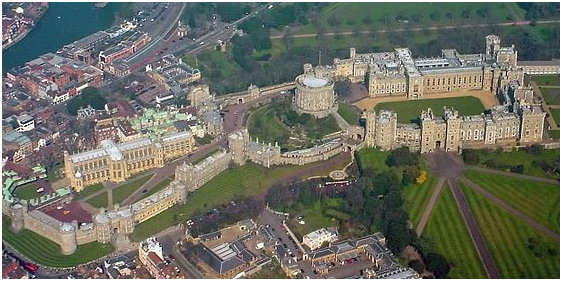 Tony Delamothe retires from The BMJ today, after nearly 30 years. His experience and expertise will be greatly missed. Here I am interested in his name.
Tony Delamothe retires from The BMJ today, after nearly 30 years. His experience and expertise will be greatly missed. Here I am interested in his name.
“Ant[h]ony” comes from the Roman name Antonius, of unknown origin. The intrusive h comes from confusion with the Greek word ἄνθος, a flower. But what about “Delamothe”?
Some surnames are purely poetic (Sjöquist, sea branch; Fischbaum, fish tree; Blumenthal and Blomdahl, flower valley) or hopeful (Morgenbesser, a better tomorrow). However, most reflect something about a parent or a forebear—a given name, an occupation, an attribute.
A patronymic (Greek πατήρ father + ὀνομα name) is a surname that derives from your father’s given name or more generally that of a forebear; a metronymic or matronymic (Greek μήτηρ mother, Latin mater) comes from your mother or a female forebear.
An occupational or status name describes what a forebear did (Baker, Glover, Miller, Smith, Zimmermann) or was (Abbott, Bishop, Knight, King) or derives from something associated with their profession (Pick, Webb, Hirsch).
Surnames from nicknames reflect some physical or behavioural attribute (Whitehead, Rosen[kopf], Geller; Fox, Lamb) or an action or event (Shakespeare, Tiplady).
Temporal surnames reflect a particular time associated with the individual (Winter, May, Christmas, Thursday, Freitag). In Ghana children are often given names of the day of the week; Kofi Annan, once secretary general of the United Nations, was born on a Friday.
Topographic surnames reflect a place of origin (French, Fleming, Bradford), a residence (Hall, Monkhouse), or an associated geographical or structural feature (Bridge, Burns, Church, Dale, Ford, Hill, Rivers, Woods; Beauchamp, Compton; Hawthorn, Keynes).
Delamothe belongs to this last group. The name Motte was given to someone who lived near or in a motte, a fortified stronghold built on a mound. Someone called Bailey either was a bailiff or lived in or near a bailey, the enclosed area in front of the motte (picture).

When Antonia Byatt wrote her Booker Prize winning novel Possession (1990), she chose the names Christabel LaMotte for her fictional Victorian poet and Maud Bailey for LaMotte’s fictional descendant and scholar of her poetry. The surname of the boxer Jake LaMotta, the “Raging Bull” played by Robert de Niro in the film of that name, is the Sicilian version.
“Motte” was borrowed from the French, via the post-classical Latin word motta, meaning a lump of earth or a mound or hillock. The words mud and mould are connected, via various Teutonic words. A variant, “moat”, came by extension to mean the ditch of muddy water around the motte. The eventual origin is the Indo-European root MEU, referring to things that are moist and slimy, like mucus, moss, mousses, mycelia, and actinomycetes (Greek μύκης, a mushroom). A mucilage is a viscid preparation made from plants by soaking or heating them in water, used medicinally in poultices and tisanes; mucilaginous means soft, moist, and slimy. Emunction (Latin emungere, Greek ἀπομύσσειν) means wiping the nose clean of mucus, and so clearing any bodily passage or excretion in general. The French word for the handkerchief that wipes the mucus away is un mouchoir. Here is Louisa May Alcott in Little Women (1869): “My new fan just matches my flowers, my gloves fit to a charm, and the real lace on Aunt’s mouchoir gives an air to my whole dress.”
Mother, apart from its usual meaning, also means dregs, sediment, scum, or mould; mother of vinegar is a ropy slime that forms on the surfaces of alcoholic liquids during fermentation and also an Acetobacter, the bacterium that produces the slime. This is thought to have the same origin as “mother” (for example, Middle Dutch moeder) in its usual sense, but during its development there may have been confusion with “mud” (Middle Dutch modder).
If you were called de la Motte, or du Motier, you owned the stronghold. Gilbert du Motier was the Marquis de Lafayette, who took part in both the French and American revolutions and was known as Le Héros des Deux Mondes. Antoine Laumet de la Mothe, Sieur de Cadillac (1658–1730), founded the city of Detroit as a settlement, Fort Pontchartrain, in 1701 and became governor of Louisiana in 1710. Perhaps he was an ancestor of Tony Delamothe?
Jeffrey Aronson is a clinical pharmacologist, working in the Centre for Evidence Based Medicine in Oxford’s Nuffield Department of Primary Care Health Sciences. He is also president emeritus of the British Pharmacological Society.
Competing interests: None declared.
